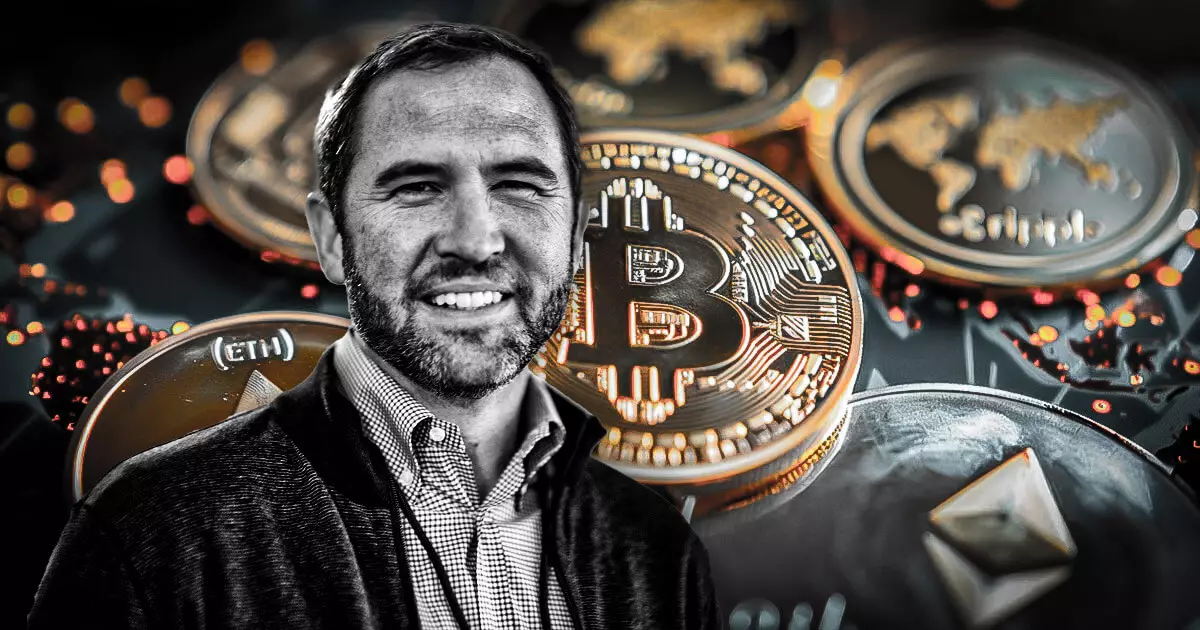In a recent update, Ripple CEO Brad Garlinghouse expressed a renewed sense of optimism regarding the evolving landscape of cryptocurrency regulations in the United States. His engagement with key legislators in Washington, D.C., marks a significant moment for the crypto community. Notably, meetings with influential figures such as Senators Tim Scott and Chuck Schumer, along with Representatives like French Hill and Ritchie Torres, highlight the importance of bipartisan dialogue in shaping the future of digital assets. Garlinghouse’s interactions point to a critical juncture where lawmakers are beginning to acknowledge the necessity of a coherent regulatory framework that not only fosters innovation but also maintains market stability.
Garlinghouse’s optimism isn’t unfounded. There seems to be a growing recognition among legislators that clear regulations are essential for the maturation of the cryptocurrency sector. This sentiment reflects a broader shift in Washington towards crafting laws that could potentially provide much-needed clarity for an industry often shrouded in uncertainty. Both the House and Senate are actively advancing initiatives aimed at establishing more transparent guidelines for cryptocurrencies, particularly focusing on stablecoins. The introduction of bills like the Stablecoin Transparency and Accountability for a Better Ledger Economy (STABLE) Act and the Guiding and Establishing National Innovation for US Stablecoins (GENIUS) Act underscores this legislative momentum.
The proposed legislation addresses crucial elements that are pivotal for stablecoin operations, including licensing requirements, risk management, and asset reserve stipulations. These components are designed to ensure that stablecoin issuers operate with a level of accountability that can help build public trust in digital currencies. However, while the proposed laws promise a more structured framework, the ultimate implications of these measures remain to be seen. Will they nurture innovation, or could they impose burdensome restrictions that stifle growth? These questions are critical as the industry inches towards a greater regulatory consensus.
Adding to the optimism for a regulatory overhaul is a shift within regulatory agencies themselves. The recent appointments of pro-crypto advocates to key positions within the SEC and CFTC, particularly under the administration of President Donald Trump, could signify an ideological pivot in how these organizations approach digital assets. With figures such as Paul Atkins leading the SEC and Brian Quintenz at the CFTC, there’s potential for a regulatory environment that is more supportive of cryptocurrency innovation while still prioritizing market integrity.
The dialogue initiated by Garlinghouse and supported by other stakeholders in the industry paints an encouraging picture for the evolution of cryptocurrency regulations. As policymakers engage more collaboratively with crypto leaders, there is a possibility that the regulatory landscape will evolve into one that balances innovation with consumer protection and economic stability. The coming months will be crucial as the proposed legislation is debated and refined. Stakeholders will be watching closely to see if these legislative efforts can lead to a cohesive regulatory framework that unlocks the full potential of the cryptocurrency market in the United States.


Leave a Reply